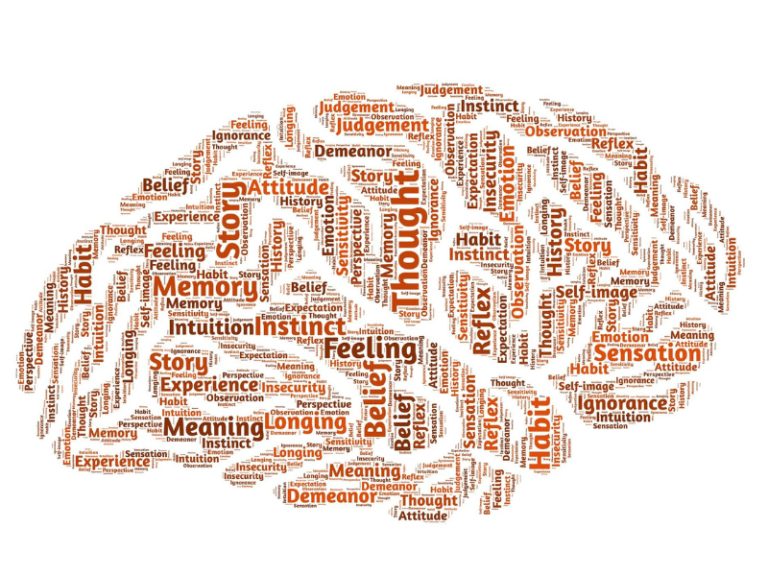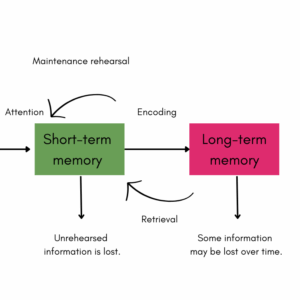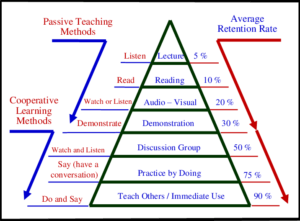
Evidence - Based Strategies To Maximise Your Memory & Learning

Ian
Ex-tutor & HSC Band 6 All Rounder @YK Education
- 10 min read
Your brain is one of the most essential organs in the human body, composed of 86 billion neurons that allow you to have the ability to learn and retain information (FYI, that is more than 10x the world’s current population). Whether it be studying for that upcoming Maths test or memorising as many quotes as you can for one of Shakespeare’s plays, our brains are constantly working to process new information, create memories, and make decisions.
To be most effective at learning and retaining such information, it is important to be across how the brain works best and how to study most effectively. Thus, we now introduce the concept of efficient learning which makes understanding content just that much faster.
What is efficient learning I hear you ask? The time it takes to achieve the degree of mastery needed to perform well on a test or exam is what we refer to as efficient learning. By concentrating on the most efficient techniques, using evidence-based study techniques can improve your academic success while maximising your learning and memory.
Here’s 6 proven techniques for efficient learning:
- Ask why
- Organising information using summarising and concept maps
- Group discussions and the Feynman technique
- Mnemonics
- Spacing and repetition
- Flashcards
- Quizzes and past papers
If you are a student looking to improve the ways that you study and ace that upcoming test, then read along and apply some of the strategies for next time!
Step 1: Understanding/Encoding
First stop, encoding.
Encoding is a process of initially learning the information and storing it in your memory. For encoding, we will discuss the strategies to reduce the cognitive load and avoid confusion while understanding new content you have learnt.
The most important thing with encoding is that we have to change it into a form that does not exceed the cognitive load that our brains can take. In other words, we need to study in a way which our brains can easily cope with.
For example, when learning how to say I am ___ in Japanese, a way we can reduce the cognitive load is putting it in a form we relate with.
watashi wa Yuna desu → I am Yuna.
watashi wa ___ desu.
You’ve probably realised that “watashi wa ___desu” means “I am ___”.
Reducing cognitive load ultimately makes encoding easier and faster. The amount of cognitive load the brain can handle varies from person to person and depends on prior knowledge, working memory capacity and attention control so teaching and learning should be modified accordingly for the best possible learning outcome (This doesn’t mean tackling easy questions. Use strategies to reduce the cognitive load when approaching difficult questions).
Importantly, the information must be stored in an organised and logical way to assist with schema construction so do activities that assist with developing relational understanding between information.
For example, how does Year 8 factorisation help with drawing graphs in Year 10?

Processing Stages of Memory
Strategies for learning to reduce cognitive load and avoid confusion
Active learning strategies are methods that engage students in the learning process, rather than simply having them passively receive information.
Here are some examples of active learning strategies:
- Active reading through summarising and concept mapping with schema theory
(a) Flow charts, mindmapping etc
2. Group discussions and Feynman technique with learning pyramid model
3. Scaffolding from understanding theory to content called the learning layers:
(a) This explains why textbooks go from explaining theory with formulas to example questions with worked solutions to textbook questions.
Consider SOLO Taxonomy and gain a relational understanding of new concepts
SOLO taxonomy (Structure of Observed Learning Outcome) involves students through making the distinction between surface and deeper level understanding, and places a significance on the bigger picture and how the new concept fits into the bigger picture.
A good way to practice SOLO taxonomy is to start with higher-order thinking, then move to lower-order thinking (memorising).
This is why we use wh-questions and discussions in the YK Method. That is, understand the concept overall before moving onto memorising.
Active reading through summarising and concept mapping with schema theory
Schema theory is a psychological theory that explains how individuals organise and process new information by relating it to their existing knowledge. You might be able to see some connection to the previous idea of developing a relational understanding of concepts.
Active reading involves actively engaging with the text, rather than simply skimming through it. Techniques like underlining important information, summarising key points, and asking questions can help to reinforce your learning and improve comprehension.
(Some of our students say they like summarising with their colourful pens and highlighters so that they can simply make appealing notes that they see on Youtube!)
Summarising is a useful tool to help with the process of schema construction. By summarising, you can better visualise how each piece of information relates to another. It can also help you identify knowledge gaps in your understanding of the material, which can prompt you to revise and refine your existing schemas.
Two strategies you can use are to create diagrams or flowcharts, and labelling information with descriptive titles or headings.
Tip: Study notes, concept maps, and diagrams should be referenced when retrieving information to reduce the cognitive load when tackling questions.
Group discussions and Feynman technique with learning pyramid model
The learning pyramid model developed by the National Training Laboratory in the United States suggests that individuals who engage in discussions with others are more likely to engage in active thinking and reflection, which can help to strengthen neural connections and facilitate the consolidation of new information.
Group discussions can also help you clarify your own thinking and solidify your understanding of the material. By articulating your ideas to others, you can better organise and consolidate the information.
At YK, students learn through active discussions in Mathematics, English, and Japanese tutoring. YK Tutors are not here to lecture students but rather act like a bouncing board for students to identify their knowledge gaps and deepen their understanding of the topic.

The Learning Pyramid taken from ResearchGate
Scaffolding from understanding theory to content called the learning layers
Building foundational knowledge first is the key to efficient mastery. At YK Education, we understand that each student has a different level of prior knowledge which is exactly why we cater for this. Our lessons are small to make students feel more comfortable asking questions compared to the larger classrooms where it is more challenging for a teacher to know your foundational knowledge exactly. Small differences make significant effects.
The YK method always starts by:
- Checking understanding of all the foundational information.
- Reading some examples as a model
- Complete the question independently and asking for help as required
Step 2: Retrieval
The second step is retrieval which is all about accessing that information you have learnt in the encoding process and applying it. For retrieval, we will explore the ways in which we can best retrieve the content and apply that to whatever situation is thrown at us.
There is always an element of memorising when tackling higher-order thinking tasks for the HSC and studying in high school. Memorising can be useful for Maths formulas, English quotes and techniques, Japanese vocabulary and grammar.
Overall, there are 3 strategies to retrieve content:
- Mnemonics and schema theory
- Flashcards and spaced repetition
- Other ways to practice active recall in preparation for the exam.
Mnemonics and schema theory:
Mnemonics are memory aids which are most effective if you create your own!
The reason why Mnemonics works has to do with how your brain stores information. Mnemonics allows the brain to create a new neural pathway that connects the new information to the pre-existing memory or association.
Basically, it creates a meaningful association between the new information and something that is already stored in our memory.
Flashcards and active recall with scheduled spaced repetition:
Flashcards are a type of learning tool that typically consist of a question or prompt on one side and the answer or information on the other. They can be used to practice active recall, memorise facts, concepts, and vocabulary.
Tip: Create your own flashcards with questions on one side and answers on the other. Quiz yourself on the questions and try to recall the answers from memory. (Anki, Quizlet, Memrise etc)
Spaced repetition is a learning technique that involves scheduling the review of information at increasingly longer intervals over time. The idea behind spaced repetition is that by reviewing information at intervals that are spaced out over time, learners are more likely to retain the information in long-term memory.
Maths – formula, types of questions
English – quotes, vocabulary
Japanese – vocabulary, grammar, kanji
Other ways to practice active recall in preparation for the exam
- Practice quizzes are another great way to practice active recall! Look for online quizzes or create your own using your textbook or lecture notes.
- Practice tests and mock exams are a way for you to test your knowledge and understanding of the material. This can help identify areas where you need more practice and reinforce what you have learnt.
- The Feynman Technique. Teaching someone else is a great way to practice active recall. Find a study partner or family member and explain a concept to them in your own words.
Conclusion
The ways you can practice encoding and retrieval are not an exhaustive list. If none of these methods suit you, think about how you best encode and retrieve information.
Get creative!
Get more study tips
Receive monthly study tips and educational content that will help you ace your final years of High School!
Thank you!
You have successfully joined our subscriber list.
